Warm Reception!
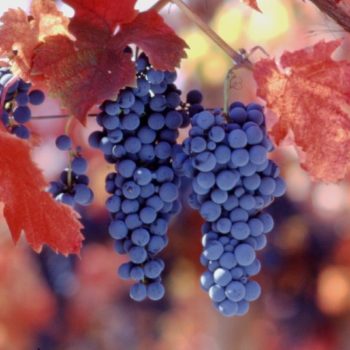
A tasty quality-price ratio has made Chilean and Argentinian wines a hit with Irish consumers. Here, we highlight some of the best-sellers on the market...
15 August 2017
Both Argentina and Chile have several unique geographical conditions that make them ideal spots for wine cultivation. Indeed, located in the Southern Cone of the American continent, with a population of 42 million and a territory that is four times larger than France, Argentina is one of the world’s nature reserves. According to Wines of Argentina, the country is privileged with outstanding natural richness and extraordinarily diverse landscapes. This wealth of natural ecosystems includes vast, highly productive grape-growing regions stretching at the foot of the Andean strip, to the West of the country, from latitude 22° south to latitude 42° south. The cultivated area covers more than 538,071 acres. It is in this context, writes Wines of Argentina, and in the course of five centuries, that the country has developed such an extraordinary wine industry. The altitude, the wide range of temperatures, the local knowhow, the new technologies and a deeply-rooted popular wine culture lend Argentina’s wines their unique identity and quality.
Meanwhile in Chile, the vine cultivation area is by width rather than length, climatically speaking. According to representative body, Wines of Chile, the height of the Andes provides lower temperatures. Chile’s coast has two great features, its western orientation and icy Humboldt current. These two features make the continental winds cause cool weather on the coastline, allowing viticulture closer to the equator, obtaining wines with higher acidity and elegant aromas.
Meanwhile, the industry site, www.winefolly.com, points out that while Chile is known for producing wines of exceptional value, that’s not to say Chilean wines don’t also include outstanding bottles to boast about. As a new world wine region, with 2,700 miles of coastline along the frigid Pacific Ocean, Chile produces wines that are both fruit-forward and herbaceous, similar to French wine. It’s no wonder then, reports Wine Folly that French wine producers from Bordeaux have invested heavily in the region, making it their home away from home.
Well-known wine writer James Suckling is also a massive fan of Chile’s wine. Indeed, Wines of Chile is keen to point out that in Suckling’s fifth trip to Chile in three years, that an impressive 84% of wines tasted scored 90 points plus. “There’s never been a better time to buy Chilean wine,” said Suckling. “I recently took my fifth trip to Chile in three years to score nearly 800 wines and found that a large majority of wines (601 out of 715) were worthy of 90 points or more! An additional 41 wines were 95 points or more. Most were tasted blind at the W Hotel in Santiago with my team, though I did make a few day trips, including ones to Valle de Colchagua and Puente Alto.”
Indeed, hundreds of outstanding quality wines are entering the market, according to Suckling. He also pointed out that: “The quality-price ratio is also hard to ignore: highly rated Chilean bottles that cost $15 to $30 a bottle in the United States can easily compete with European or Californian counterparts that would cost three to four times as much.”
Ireland’s most popular wine brand
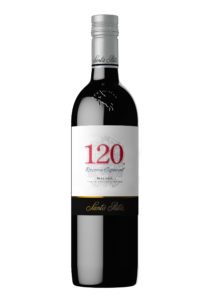 Established in 1880, Santa Rita is one of Chile’s oldest and most respected wineries. As a member of the Order of Wild Geese, Santa Rita is proud of its Irish heritage. According to legend, General Bernado O’Higgins and his 120 patriots sought refuge in the Santa Rita cellars whilst fighting for Chile’s independence in the 1814 Battle of Rancagua. Within these same cellars, the award-winning ‘120’ wines are crafted in honour of the heroes who inspired them.
Established in 1880, Santa Rita is one of Chile’s oldest and most respected wineries. As a member of the Order of Wild Geese, Santa Rita is proud of its Irish heritage. According to legend, General Bernado O’Higgins and his 120 patriots sought refuge in the Santa Rita cellars whilst fighting for Chile’s independence in the 1814 Battle of Rancagua. Within these same cellars, the award-winning ‘120’ wines are crafted in honour of the heroes who inspired them.
Today, Santa Rita is the most popular wine brand in Ireland with Santa Rita 120 Sauvignon Blanc and Cabernet Sauvignon the best-selling white and red wines respectively. The winery was awarded ‘Winery of the Year 2016’ by Wines of Chile, and was recognised as one of the ‘World’s Most Admired Wine Brands’ by Drinks International. This year also sees the 50th anniversary celebrations of the Santa Rita 120 brand.
Whilst the business is steeped in tradition, Santa Rita is a contemporary, modern producer which continually invests to ensure the best quality wines are produced in the most sustainable way possible. The brand’s ‘WiSe Project’ in the Maipo Valley is a revolutionary approach to growing wine by mapping and planting varietal specific plots working through a code of best practices, parameters and principles, all with a US$20 million investment plan.
Santa Rita’s vineyards have all received the ‘Certified Sustainable’ accreditations by Wines of Chile and the Santa Rita Estates group was awarded ‘Ethical Winery of the Year 2015’ by The Drinks Business.
Consistency a top priority
 Distributed in Ireland by Gilbeys, Vina Carmen is Chile’s oldest winery. Founded in 1850 by Christian Lanz, the winery was named after Christian’s beloved wife Carmen. The brand states a commitment to quality and consistency has always been a top priority for Carmen. Today the wine is exported to more than 50 countries worldwide and with over 160 years of experience, it is one of the most recognised and awarded wines to come out of Chile.
Distributed in Ireland by Gilbeys, Vina Carmen is Chile’s oldest winery. Founded in 1850 by Christian Lanz, the winery was named after Christian’s beloved wife Carmen. The brand states a commitment to quality and consistency has always been a top priority for Carmen. Today the wine is exported to more than 50 countries worldwide and with over 160 years of experience, it is one of the most recognised and awarded wines to come out of Chile.
Premier 1850 is a contemporary brand paying tribute to Vina Carmen. The Sauvignon Blanc is a fruity white with an intense and lingering bouquet, with a good structure in the mouth, featuring balanced natural acidity; refreshing on the palate with a fresh and elegant aroma.
True expression of Argentine terroir
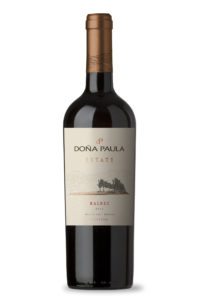 Doña Paula is one of the rising stars of Argentina. Born out of a vision to create the highest quality wines with authentic typicity from the best wine producing areas within the world famous wine producing region of Mendoza, viticulturalist Martin Kaiser and chief winemaker Marcos Fernandez are the driving passion behind this brand.
Doña Paula is one of the rising stars of Argentina. Born out of a vision to create the highest quality wines with authentic typicity from the best wine producing areas within the world famous wine producing region of Mendoza, viticulturalist Martin Kaiser and chief winemaker Marcos Fernandez are the driving passion behind this brand.
All of the Doña Paula wines are made with grapes grown on their own land, which are managed using sustainable practices. Located in the foothills of the Andes Mountains in almost desert like conditions, the vineyards produce wines with great depth and elegant aromas and with a range of tiers there is a price and style to suit every budget and palate.
Malbec is the main focus within the brand with the Doña Paula Los Cardos and Estate Malbec among the top-selling wines, however innovation is also top of the agenda with successful plantings of Sauvignon Blanc, Riesling, Grenache, Cabernet Franc and Petit Verdot amongst others adding breadth and diversity to the traditional Argentinian offerings. As part of the Santa Rita Estates group, Doña Paula celebrates the heritage of Santa Rita from Chile whilst showing the true expression of Argentine terroir; the brand really is one to look out for in the future.
Distinguished by intensity and elegance
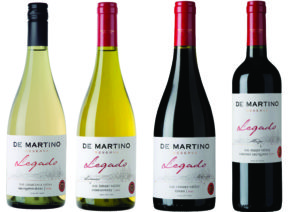 Showcasing Chile’s diversity, the De Martino portfolio is Malbec is the main focus within Doña Paula with the brand’s Los Cardos and Estate Malbec among the top-selling wines Doña Paula, Finca Alluvia Gualtallary (Uco Valley) globally recognised for its outstanding quality and for wines that are a true reflection of its origin. Since its start in 1934, the De Martino family has explored more than 347 vineyards from north to south, from mountain ranges to sea. The result is they select those terroirs that best represent the family’s philosophy and passion for winemaking. The company’s winemaker, Marcelo Retamal was named the 13th most influential winemaker in the world and the best of Latin America by Decanter Magazine in 2015.
Showcasing Chile’s diversity, the De Martino portfolio is Malbec is the main focus within Doña Paula with the brand’s Los Cardos and Estate Malbec among the top-selling wines Doña Paula, Finca Alluvia Gualtallary (Uco Valley) globally recognised for its outstanding quality and for wines that are a true reflection of its origin. Since its start in 1934, the De Martino family has explored more than 347 vineyards from north to south, from mountain ranges to sea. The result is they select those terroirs that best represent the family’s philosophy and passion for winemaking. The company’s winemaker, Marcelo Retamal was named the 13th most influential winemaker in the world and the best of Latin America by Decanter Magazine in 2015.
De Martino’s vision of reinventing Chile has transformed the company: De Martino was the leader in the development of Carmenère in Chile. Retamal, who has led the De Martino team for over 20 years, continues the pioneering spirit of the De Martino founders by converting from traditional agriculture to 100% organic. Started in 1988, De Martino used its first harvest of organic grapes in the production of organic wines in 2001 which led to the company being the first winery in the world to achieve carbon credits in 2007.
The award-winning De Martino Legado series is very popular in Ireland. From selected plots working in different valleys, the Legado series is distinguished by its intensity and elegance. The aging is carried out in used French barrels resulting in balanced and complex wines.
This results in wines of unique character; truly reflecting Chile’s most outstanding producing valleys. The De Martino range is on sale from independent off-licences at €16 and the offers include:
- De Martino Legado Syrah Reserva, Choapa Valley
- De Martino Legado Merlot Reserva, Maipo Valley
- De Martino Legado Cabernet Sauvignon Reserva, Maipo Valley (92 points)*
- De Martino Legado Chardonnay Reserva, Limari Valley (92 points)*
- De Martino Legado, Sauvignon Blanc, Casablanca Valley (91 points)*
De Martino wines are represented in Ireland by Febvre Wine Distributors.
*(Points scored in 2017 Descorchados Guide, the most influential Chilean and Latin American wine guide)
Rich history spanning more than 140 years
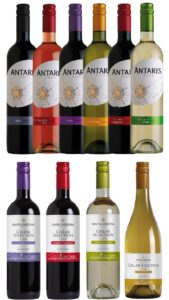 Santa Carolina is part of Carolina Wine Brands, one of the leading wine groups in Chile, which belongs to the Watt’s S.A. agribusiness group owned by the Larrain family.
Santa Carolina is part of Carolina Wine Brands, one of the leading wine groups in Chile, which belongs to the Watt’s S.A. agribusiness group owned by the Larrain family.
With a history spanning over 140 years, Santa Carolina is one of the oldest and most significant wineries in Chile. Santa Carolina’s elegant range of wines is a true expression of the wonderful natural resources Chile has to offer. From the modern fruit-driven varietal and elegant Reserva range to the classic Barrica Selection wines, there is something to satisfy a wide spectrum of tastes.
The Santa Carolina Antares brand continues to be a success with Irish retailers and consumers for 10 years now at an RRP of €9.99. Specifically designed for the independent trade by its Irish distributor Ampersand, it competes with the multiple trade prices but with the highest quality wine.
The range offers six varietals and some have featured as winners in the NOffLA Gold Star Awards. Meanwhile, the Santa Carolina Cellar Selection is keen on price while over-delivering on quality. There are four in the range; Merlot, Sauvignon Blanc, Cabernet Sauvignon and Chardonnay. Currently the Merlot features in the 2016-2017 NOffLA Awards with a Silver Star. Cellar Selection is found to be always under €10 in retailers and in some can be under €9.
For more information on Santa Carolina or if you would like to improve your wine range, contact your Ampersand representative or call the sales line directly on 01 4130150. You can also get in contact via the website at www.ampersandsales.ie.
Cycling ahead!
 Cono Sur’s famous Bicicleta range of wines were revamped last summer with beautiful limited edition labels featuring artwork exclusively commissioned by esteemed British artist Eliza Southwood.
Cono Sur’s famous Bicicleta range of wines were revamped last summer with beautiful limited edition labels featuring artwork exclusively commissioned by esteemed British artist Eliza Southwood.
The labels celebrate the beauty and passion of cycling and were launched by Irish cycling legend Seán Kelly, who was the perfect ambassador given many of the values he shares with Cono Sur: hard work and dedication with the aim of achieving the very best.
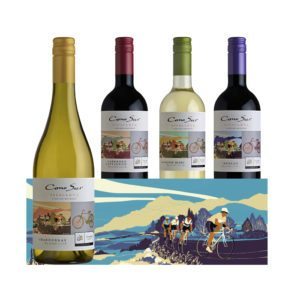 Cono Sur was the world’s first carbon-neutral winery, and the bicycle has become a symbol that honours its employees and represents its commitment to developing a viticulture both in terms of quality and with respect for the environment.
Cono Sur was the world’s first carbon-neutral winery, and the bicycle has become a symbol that honours its employees and represents its commitment to developing a viticulture both in terms of quality and with respect for the environment.
As a result, Bicicleta, Cono Sur’s most popular range, is named after the bicycles the company’s workers use to get around the vineyards, helping to keep their carbon footprint low and their grapes at optimum quality.
The limited edition packaging was released in time to celebrate Cono Sur’s ongoing sponsorship of the Tour de France, and though the Tour is now finished for another year the bottles will remain on-shelf for the remainder of the cycling season, including the famous Vuelta a España (Tour of Spain) in August and the historic Il Lombardia in Italy in September.
Cono Sur is exclusively distributed in Ireland by Findlater & Co.



 Print
Print

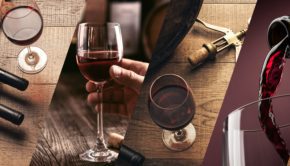
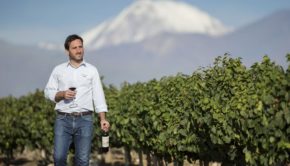

Fans 0
Followers